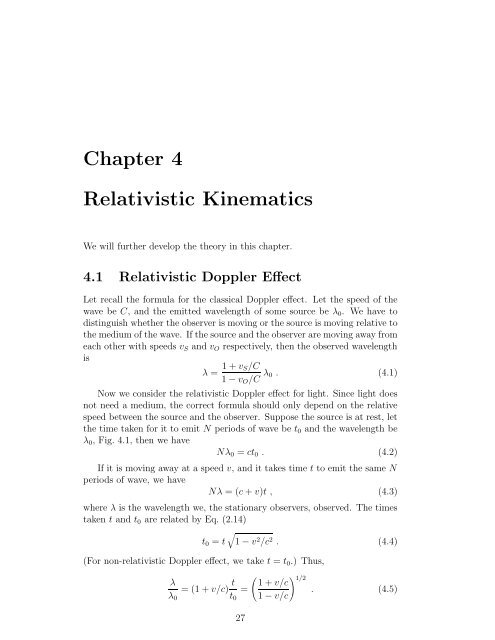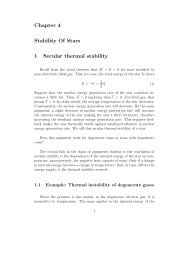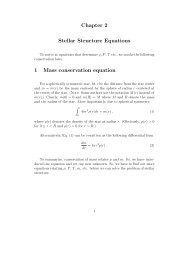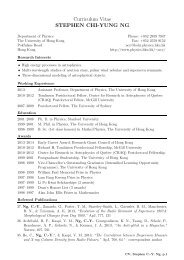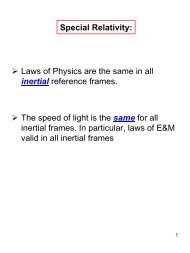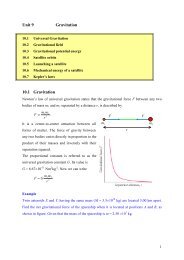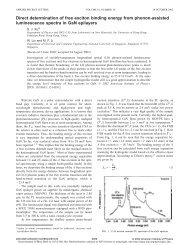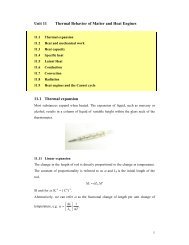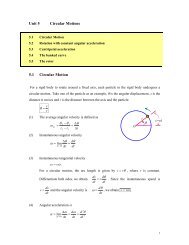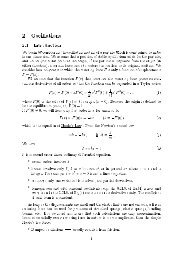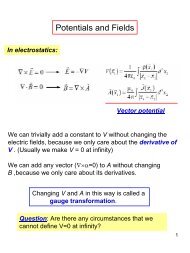here - Department of Physics, HKU
here - Department of Physics, HKU
here - Department of Physics, HKU
You also want an ePaper? Increase the reach of your titles
YUMPU automatically turns print PDFs into web optimized ePapers that Google loves.
Chapter 4<br />
Relativistic Kinematics<br />
We will further develop the theory in this chapter.<br />
4.1 Relativistic Doppler Effect<br />
Let recall the formula for the classical Doppler effect. Let the speed <strong>of</strong> the<br />
wave be C, and the emitted wavelength <strong>of</strong> some source be λ 0 . We have to<br />
distinguish whether the observer is moving or the source is moving relative to<br />
the medium <strong>of</strong> the wave. If the source and the observer are moving away from<br />
each other with speeds v S and v O respectively, then the observed wavelength<br />
is<br />
λ = 1 + v S/C<br />
1 − v O /C λ 0 . (4.1)<br />
Now we consider the relativistic Doppler effect for light. Since light does<br />
not need a medium, the correct formula should only depend on the relative<br />
speed between the source and the observer. Suppose the source is at rest, let<br />
the time taken for it to emit N periods <strong>of</strong> wave be t 0 and the wavelength be<br />
λ 0 , Fig. 4.1, then we have<br />
Nλ 0 = ct 0 . (4.2)<br />
If it is moving away at a speed v, and it takes time t to emit the same N<br />
periods <strong>of</strong> wave, we have<br />
Nλ = (c + v)t , (4.3)<br />
w<strong>here</strong> λ is the wavelength we, the stationary observers, observed. The times<br />
taken t and t 0 are related by Eq. (2.14)<br />
√<br />
t 0 = t 1 − v 2 /c 2 . (4.4)<br />
(For non-relativistic Doppler effect, we take t = t 0 .) Thus,<br />
λ<br />
= (1 + v/c) t =<br />
λ 0 t 0<br />
27<br />
( ) 1/2<br />
1 + v/c<br />
. (4.5)<br />
1 − v/c


